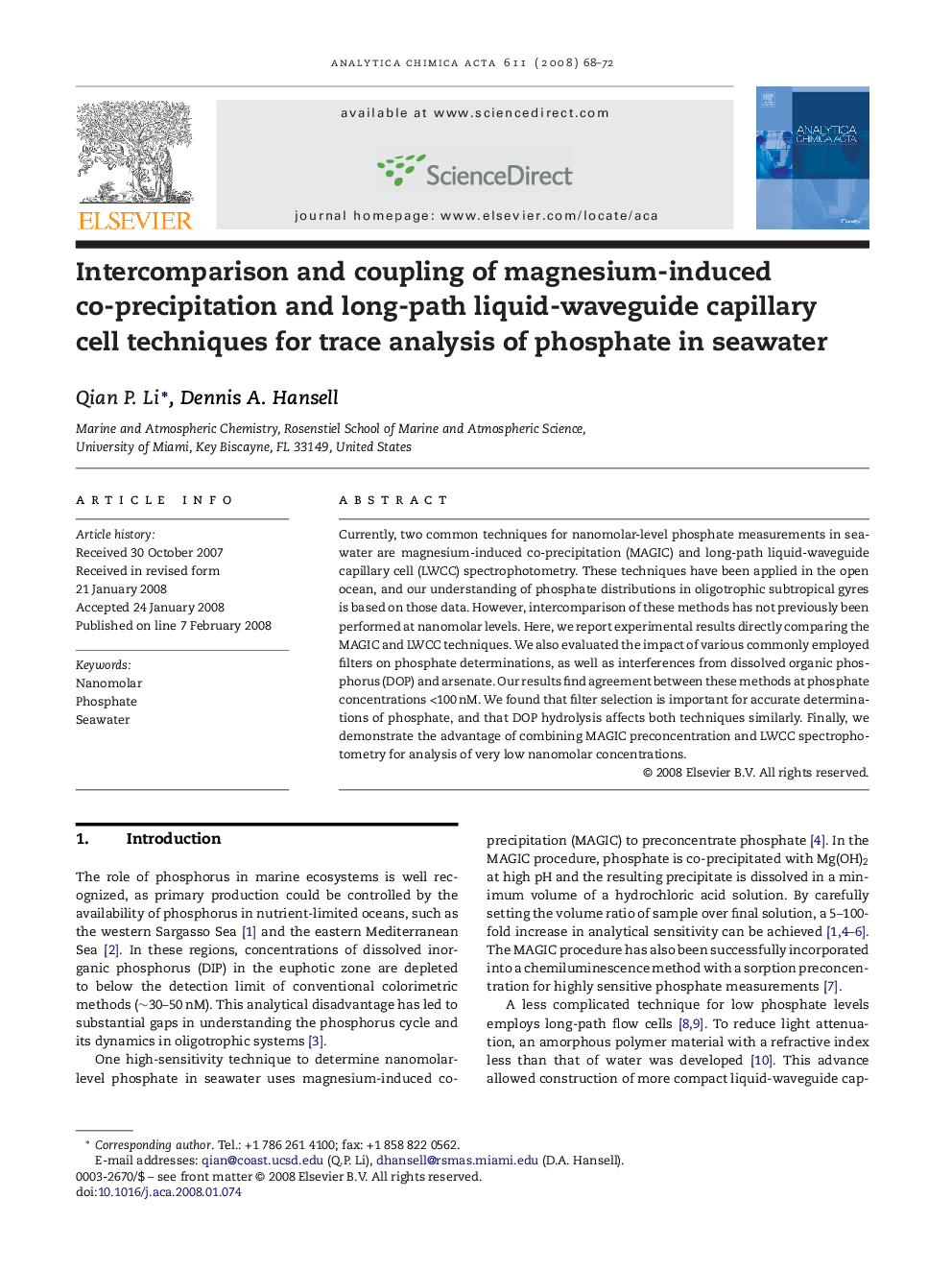| Article ID | Journal | Published Year | Pages | File Type |
|---|---|---|---|---|
| 1169267 | Analytica Chimica Acta | 2008 | 5 Pages |
Currently, two common techniques for nanomolar-level phosphate measurements in seawater are magnesium-induced co-precipitation (MAGIC) and long-path liquid-waveguide capillary cell (LWCC) spectrophotometry. These techniques have been applied in the open ocean, and our understanding of phosphate distributions in oligotrophic subtropical gyres is based on those data. However, intercomparison of these methods has not previously been performed at nanomolar levels. Here, we report experimental results directly comparing the MAGIC and LWCC techniques. We also evaluated the impact of various commonly employed filters on phosphate determinations, as well as interferences from dissolved organic phosphorus (DOP) and arsenate. Our results find agreement between these methods at phosphate concentrations <100 nM. We found that filter selection is important for accurate determinations of phosphate, and that DOP hydrolysis affects both techniques similarly. Finally, we demonstrate the advantage of combining MAGIC preconcentration and LWCC spectrophotometry for analysis of very low nanomolar concentrations.
